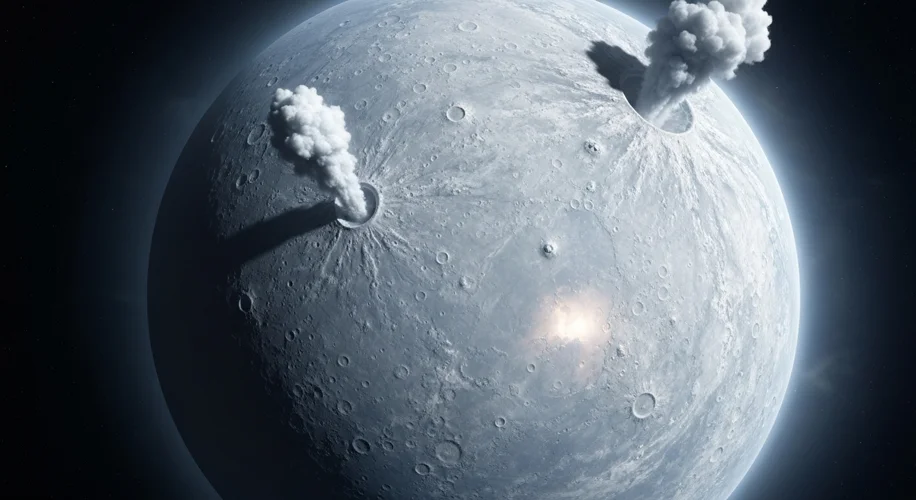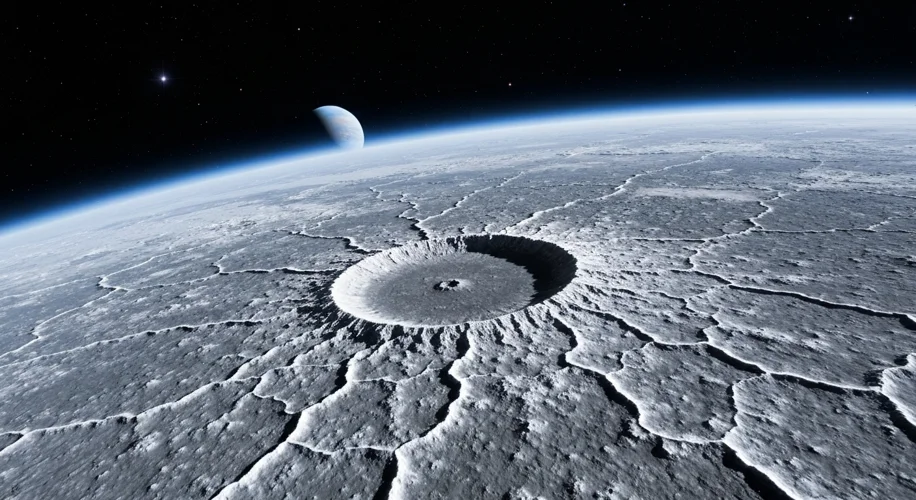Imagine a world, not of oceans teeming with life as we know it, but of subsurface seas, vast and ancient, hidden beneath a crust of ice and rock. A world that, eons ago, may have held the very ingredients for life’s genesis. This is the tantalizing possibility that surrounds Ceres, the largest object in our solar system’s Asteroid Belt, a dwarf planet that has captivated scientists and ignited imaginations.
For centuries, the Asteroid Belt was viewed as a cosmic junkyard, a barren realm of tumbling rocks. But as our telescopes grew sharper and our probes ventured deeper into the void, a more nuanced picture began to emerge. Ceres, discovered in 1801 by Giuseppe Piazzi, was initially classified as a planet, then an asteroid, and now, fittingly, a dwarf planet. It resides in the inner solar system, between Mars and Jupiter, a celestial body more substantial than all other asteroids combined, making up roughly one-third of the belt’s total mass.

What makes Ceres so compelling is its composition. Unlike its more arid neighbors, Ceres is a water-rich world. Data from NASA’s Dawn mission, which orbited Ceres from 2015 to 2018, revealed that water ice makes up a significant fraction of its mass. More astonishingly, evidence points to the existence of a briny subsurface ocean, a vast reservoir of liquid water shielded from the harsh vacuum of space by miles of icy mantle.
This hidden ocean is not merely a curiosity; it’s a potential incubator. Scientists theorize that Ceres, early in its history, might have been warm enough to sustain liquid water on its surface. The presence of water, combined with potential sources of energy and organic molecules—common building blocks of life found throughout the solar system—creates a compelling case for Ceres as a place where life might have once taken root.
Consider the early solar system, a chaotic yet dynamic period. Collisions were frequent, but these impacts also delivered vital materials, including water and organic compounds, to nascent celestial bodies like Ceres. It’s plausible that Ceres, with its internal heat generated by radioactive decay and the gravitational tug of Jupiter, maintained a subsurface ocean for millions, perhaps even billions, of years. This sustained liquid water environment, protected from sterilizing radiation, would have been a prime candidate for prebiotic chemistry – the chemical reactions that could have led to the first simple life forms.
The evidence for this watery past is not just theoretical. The surface of Ceres is pockmarked with craters, some of which reveal bright, salt-rich deposits. These are believed to be the remnants of cryovolcanoes, geological features that erupt water and other volatile compounds from the interior. One notable feature, the Ahuna Mons, stands as a solitary mountain, a testament to the geological activity that once, and perhaps still, churned beneath Ceres’ icy shell. The analysis of these deposits has indicated the presence of salts like magnesium sulfate and carbonates, further supporting the idea of a briny interior.
While no definitive signs of past or present life have been found on Ceres, its potential remains a powerful draw for future exploration. The discovery of these subsurface oceans on icy bodies, not just in the asteroid belt but also on moons like Europa and Enceladus in the outer solar system, is reshaping our understanding of where life might exist beyond Earth. Ceres, often overshadowed by its more famous icy counterparts, offers a unique perspective as an inner solar system body that could have harbored similar conditions.
The implications are profound. If life could arise in the seemingly hostile environment of an asteroid belt dwarf planet, it broadens the scope of our search for extraterrestrial life immeasurably. It suggests that the universe may be far more fecund than we ever imagined, with countless watery oases waiting to be discovered.
As we continue to probe the mysteries of our solar system, Ceres stands as a silent, icy sentinel, holding secrets of a watery past and the tantalizing possibility of ancient life. It reminds us that even in the most unexpected corners of space, the fundamental ingredients for life may have been present, waiting for their moment to ignite.

